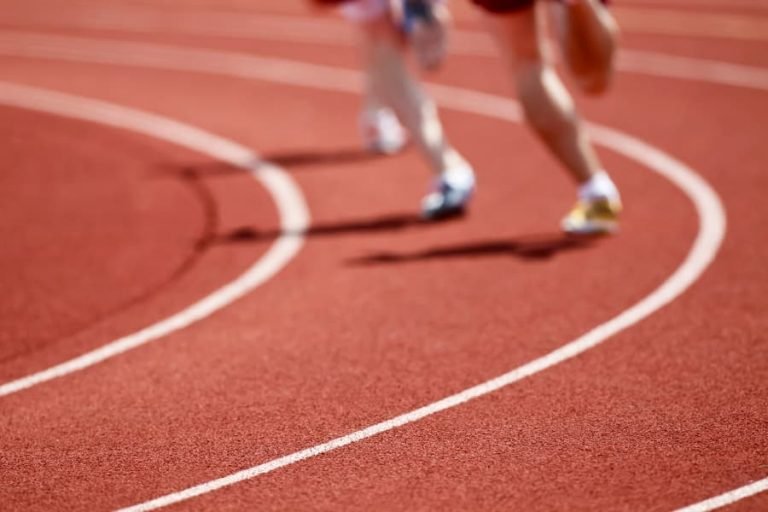How Running Surfaces Affect Injury Risk
Knee joint flexing
Besides moving your legs and running anywhere, there is a more complicated aspect of running: the running surface. There are 3 main types of running surfaces that athletes run on: trail, track, and pavement. All of these surfaces each have their benefits and drawbacks. With each stride, each surface offers a distinct response, influencing forces exerted on the joint. The different surfaces that runners choose can have varying impacts on their joints and varying injury risks.
What are joints?
A joint is where two or more bones meet at one part of the body to create movement. One of the biggest joints in the human body is the knee joint which connects the thigh bone (femur) to the shin bone (tibia). Since it takes up the majority of the impact when running, this joint is the most important for runners. It is essential to maintain a constant stride, allowing better balance and stability to the joint.
Pavement Running:
Pavement running is the most common type of running for a mid-distance track athlete. The sidewalks and asphalt roads provide a stable and predictable surface, which is why most athletes complete their mileage on this surface. The pavement is one of the most versatile surfaces but often has the most drawback from the increase in joint stress.
Pros:
Pavement running is extremely accessible and since the surface is fairly flat and maintained, the consistency makes it easier for a consistent stride. This is best for long or daily runs where there can be a sense of variety with routes.
Cons:
Although pavement has its benefits, the hard surface and repetitive impact can lead to injury risk. Since pavement is one of the hardest running surfaces, the concrete does not absorb the impact on each foot strike, putting extra impact on the joints and bones. Long-term exposure to this type of impact shock can lead to chronic injuries.
Injuries:
The most common injuries that occur from pavement running are shin splints, stress fractures (in the small bones of the ankle or foot), and runners' knees. Achilles tendonitis and IT band syndrome can also result from running repeatedly on pavement.
Although the risk of injury when running on pavement is high, it is easily accessible and is the best for long and draining runs. To reduce the risk of injury, it is best to rotate running surfaces, wear supportive shoes, and train for strength and stability.
Trail Running (Grass and Dirt Surfaces):
Running on natural surfaces like grass and dirt is one of the ways runners alternate between surfaces. The softer and smoother terrain allows runners to have a more comfortable experience as it significantly decreases the impact on the bones and joints.
Pros:
Running on grass and dirt has less impact on the joints than concrete. The proper cushioning being provided by grass reduces the risk of stress fractures or shin splints. The uneven terrain on a trail and the softness of the surface cause the engagement of a wider range of muscles. Over time, this can lead to improved muscle strength.
Cons:
Although the terrain can reduce joint and bone injuries, the unpredictable trails such as tiny roots and rocks can lead to minor injuries.
Injuries:
The most common injuries from trail running are ankle sprains and calf strains.
Trail running is one of the best running surfaces for building muscle and lowering joint impact. In order to reduce the risk of injury when running on trails, adjusting strides, strengthening the lower leg, and wearing proper shoes are especially important.
Track Running:
The track is a crucial aspect of a mid-distance or sprinter’s training program. The flat and well-maintained synthetic surface is perfect for a runner with a structured workout. However, while the track decreases the risk of joint and bone pain, the track has a unique risk of injury.
Pros:
The track is the ideal place for a runner to focus on race strategies and is especially beneficial to competitive runners. Many runners use the track for speed work. The synthetic surface absorbs the pounding better than pavement and offers a much smoother surface.
Cons:
Although the track is beneficial for speed work, the repeated curves can increase the physical stress on the left leg. Running exclusively on track can be mentally draining or exhausting; especially for distance runners who are running longer workouts.
Injuries:
A common injury that occurs from track running is IT band syndrome (constant turning in one direction).
While running on the track is the best way to build speed, the track can be mentally draining and the constant turns can lead to injury risk. It is best to alternate between different running surfaces than to solely run on the track. In order to reduce the risk of injury, having proper footwear such as wearing a lighter shoe can help.
Running on a track is versatile
Conclusion:
Each running surface has its own benefits and drawbacks. Pavement running impacts more on joints, trail running is uneven, and track running can be mentally draining. It is important to understand the best way to use each surface for minimizing injury risk.
Sources:
Cannon, Isabella. “The Pros and Cons of Running on Different Surfaces.” A Healthier Michigan, August 19, 2024. https://www.ahealthiermichigan.org/stories/health-and-wellness/the-pros-and-cons-of-running-on-different-surfaces.
Falzone, Chris. “Avoid Running Injuries by Running on the Right Surface.” Mike Ryan Sports Medicine, October 29, 2023. https://mikeryansportsmedicine.com/avoid-running-injuries-by-running-on-the-right-surface/.
Runningforthehills20. “The Benefits of Running on Grass.” Running for the Hills, August 7, 2024. https://runningforthehills.com/running-on-grass.
Gold Coast Surgery Center. “Pavement Pounding vs Joint Health: The Truth about Running Surfaces & Your Body.” Gold Coast Surgery Center, August 7, 2024. https://goldcoastsurgicenter.com/joint-replacement/pavement-pounding-vs-joint-health-the-truth-about-running-surfaces-your-body/.
“Health Lesson: Learning about Joints.” National Institute of Arthritis and Musculoskeletal and Skin Diseases, November 15, 2024. https://www.niams.nih.gov/health-topics/educational-resources/health-lesson-learning-about-joints.
“Iliotibial Band Syndrome.” Johns Hopkins Medicine, May 1, 2024. https://www.hopkinsmedicine.org/health/conditions-and-diseases/iliotibial-band-syndrome.


